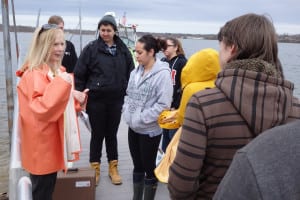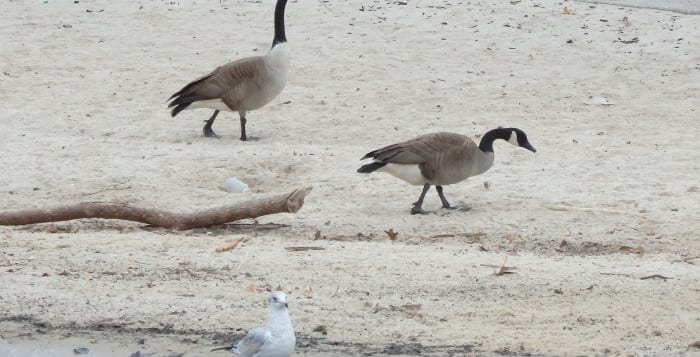Stony Brook students step up to study lake
Long Island’s largest freshwater lake is not what it used to be, but North Shore lawmakers and educators are teaming up to bring it back.
Darcy Lonsdale and her students attending the Stony Brook University School of Marine and Atmospheric Sciences arrived at the docks of the 243-acre Lake Ronkonkoma on Tuesday morning, equipped with various aquatic testing supplies to study marine life in the waters. Bill Pfeiffer, part of the Nesconset Fire Department’s water rescue team, helped guide the students as residents and government officials flanked the docks in talks of a Lake Ronkonkoma that once was.
Pfeiffer has been diving in and exploring around Lake Ronkonkoma for years, mapping out the bottom of the lake and chronicling the different kinds of debris on its floor, which he said includes anything from parts of old amusement park rides to pieces of docks.

“This lake needs a healthy amount of attention,” he said. “It has been appearing clearer, but [Superstorm] Sandy turned it into a brown mud hole again.”
The lake is home to various species, including largemouth bass and chain pickerel.
Members of the Lake Ronkonkoma Advisory Task Force hosted Pfeiffer and the students with hopes of gaining a deeper understanding of the waters and encouraging the four jurisdictions overseeing it — Brookhaven, Islip and Smithtown towns and Suffolk County — to form one united board to advocate for the lake.
Newly elected county Legislator Leslie Kennedy (R-Nesconset) said the goal was to compile data that will help secure grant money, channel stormwater runoff away from the lake and garner legislative support for the lake.
“Years ago, this was a resort. There were tons of beachfronts. There were cabins and cabanas,” she said. “This is something we all could be proud of. It could be a site where people recreate.”
Looking ahead, Kennedy said she hoped a united front could attract more foot traffic and fishing to the lake. She stood along the waters on Tuesday morning and said she was anxious to see the kinds of results the Stony Brook students help to find.
“I am dying to know what the pH levels are at the bottom of the lake,” she said.
Lawmakers and Lake Ronkonkoma advocates said one of the biggest hurdles in the way of cleaner waters rested in the population of geese gaggling around the area. As more geese make their way in and around the lake, the nitrogen in their waste pollutes the water. Volunteers with the Lake Ronkonkoma civic had to sweep the length of the dock Tuesday morning, as Pfeiffer prepared for the students, in order to rid it of geese excrement.
“To help the lake, relocating or terminating some of the geese might not be a bad idea,” Brookhaven Supervisor Ed Romaine (R) said.
The students could be funneling data to the different municipalities overseeing the lake by the end of the summer.
“You want a report that will spell out how to improve the clarity of this water,” Romaine said. “The students are welcome back anytime.”







